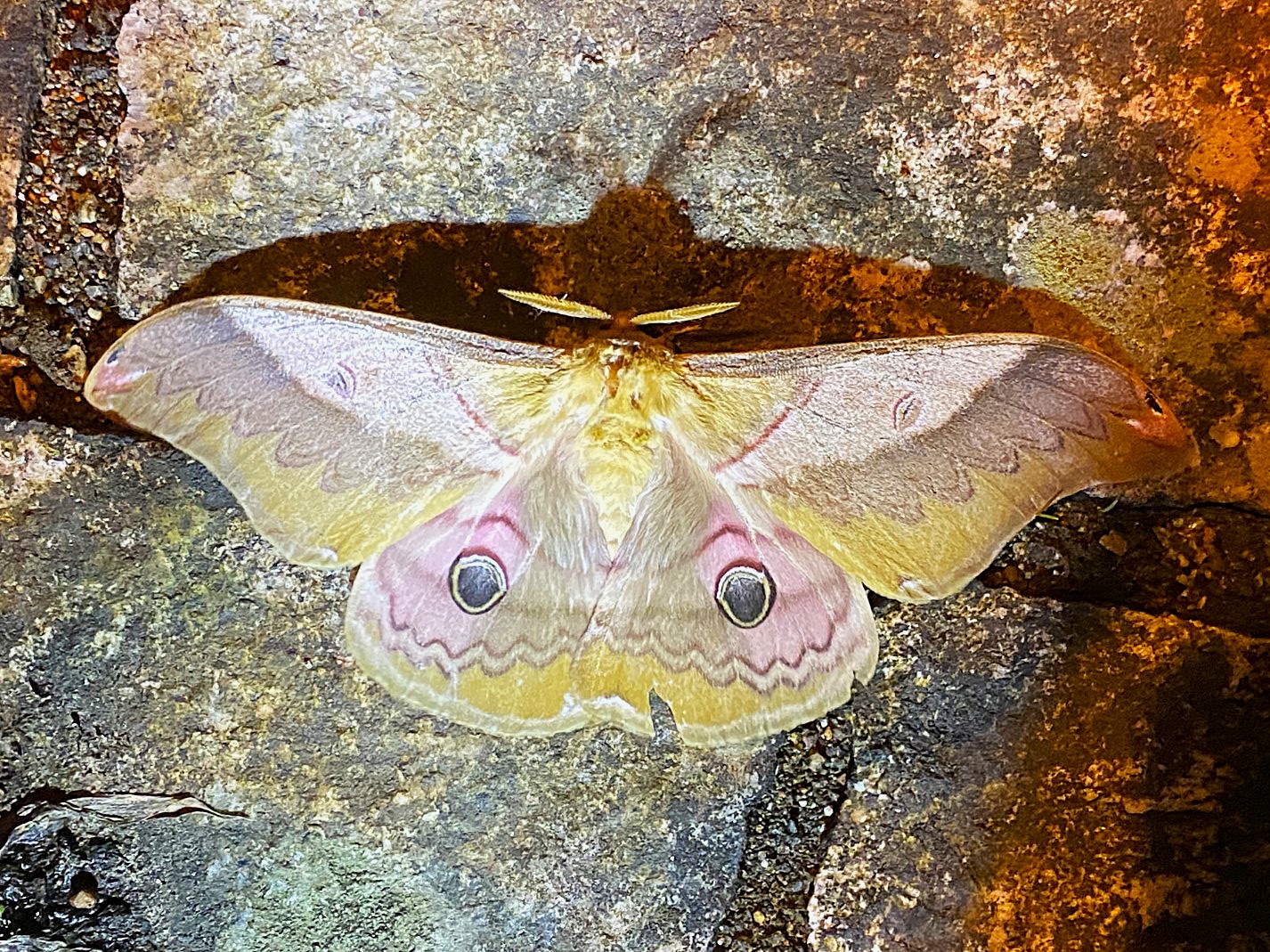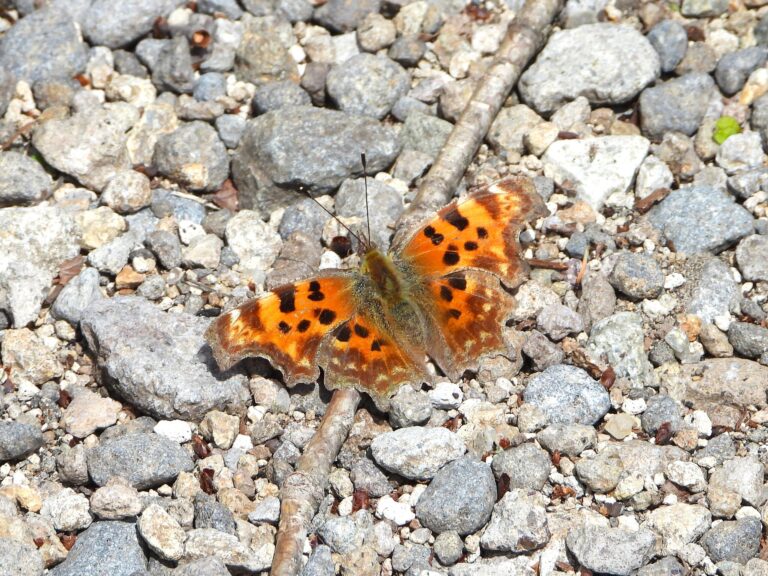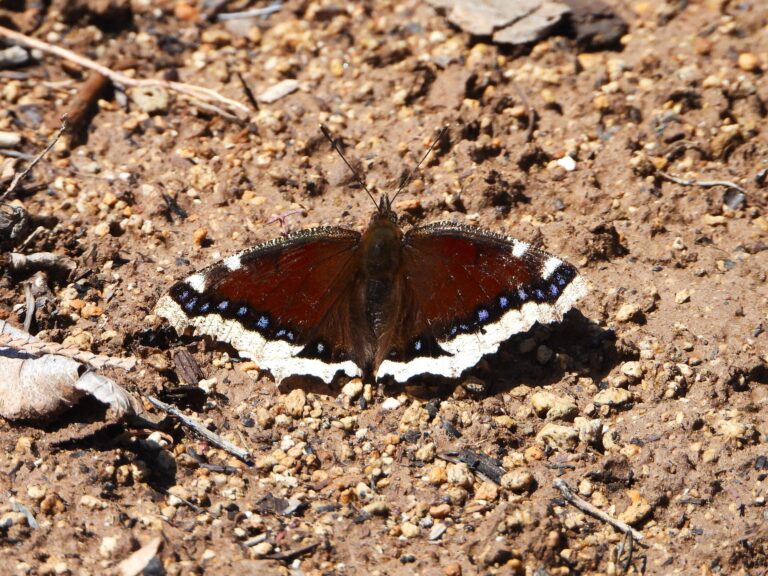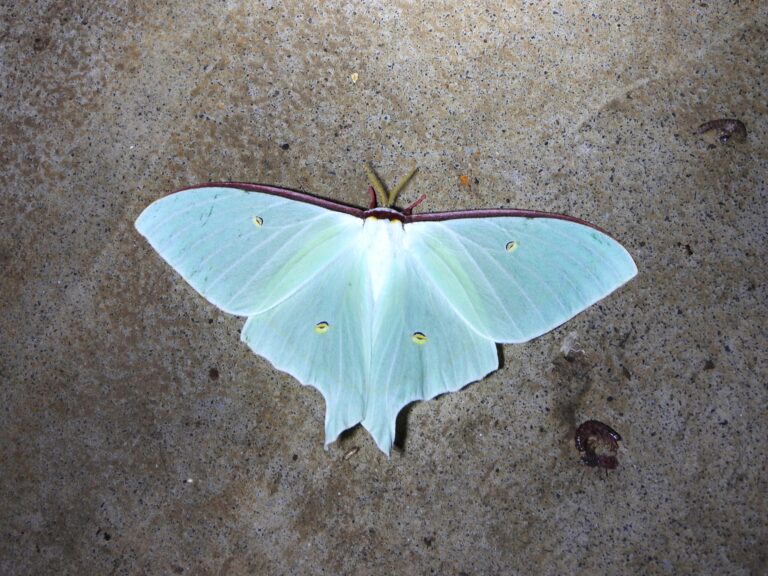Kususan (Saturnia japonica) – Wildlife of Japan
Introduction
Kususan (Saturnia japonica) is one of Japan’s most remarkable giant moths in the family Saturniidae. Known for its soft golden-brown wings and four transparent eyespots, this species symbolizes the calm beauty of Japan’s autumn nights. It is often seen resting near streetlights in rural villages or forested areas from late September through November.
Appearance
Adults have a wingspan of about 110–150 mm, with females being larger and more robust.
The wings are light brown to grayish-yellow with a faint pinkish or purplish diagonal band across both forewings and hindwings.
Each wing bears a transparent eyespot, though those on the forewings are smaller than the large, round eyespots on the hindwings.
These eyespots, bordered in black and yellow, are believed to deter predators.
The moth’s body is densely covered with soft hair, giving it a plush, velvety texture.
Habitat & Distribution
Kususan inhabits lowland to montane broadleaf forests throughout Honshu, Shikoku, and Kyushu, and has also been recorded on Tsushima Island.
It prefers areas rich in host trees such as camphor (Cinnamomum camphora), cherry (Prunus spp.), oak (Quercus spp.), and maple (Acer spp.).
Occasionally, it can also be found in suburban parks where host trees are present.
Adults are most active on calm autumn nights when temperatures begin to cool.
Behavior
This species is nocturnal and strongly attracted to artificial light.
Adults emerge in autumn—mainly in October in central Japan, and slightly earlier in southern regions.
They do not feed because their mouthparts are underdeveloped, and their adult lifespan lasts only about a week.
Males use their large, feathery antennae to locate females by following pheromone trails.
Diet
Adult moths do not feed.
Larvae feed on the leaves of camphor, cherry, oak, and maple trees.
The caterpillars are bright green with small protrusions and grow actively through summer before spinning a strong brown cocoon, in which they overwinter until the following autumn.
Reproduction
Females lay clusters of eggs on the leaves of host trees soon after mating.
The larvae develop through several molts during summer, then spin a cocoon in which they remain as pupae through the hot months.
Adults emerge in autumn, usually between late September and November, producing one generation per year.
Conservation
Kususan remains common across Japan and is not currently listed as threatened.
However, the decline of native broadleaf forests and increasing light pollution may locally reduce populations.
Protecting forest habitats and reducing excessive night lighting are essential for preserving this iconic moth of Japan’s autumn nights.
Author’s Impression
I often search for this moth in autumn. Finding a Kususan resting beneath a streetlight makes me feel the quiet arrival of the cool season. Its golden wings shimmer softly in the night—a gentle reminder that summer has ended and autumn has truly begun.
In some years, however, Kususan populations increase dramatically, leading to local outbreaks. For insect enthusiasts like me, such events are fascinating to witness, but they can cause quite a stir in society when large numbers gather around lights or buildings.








